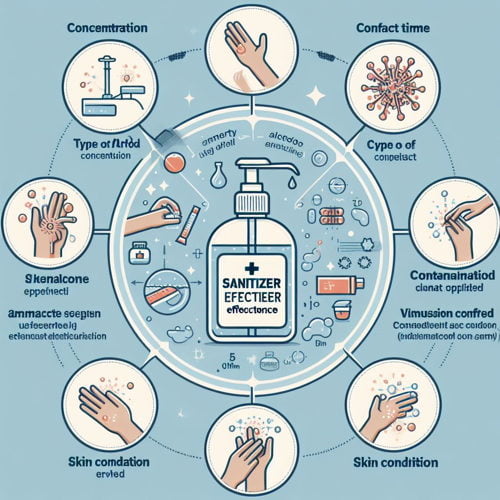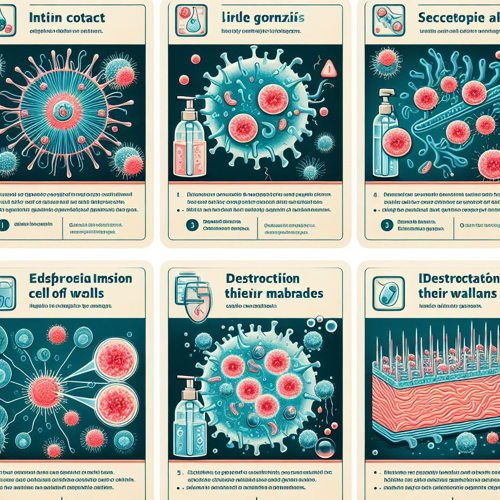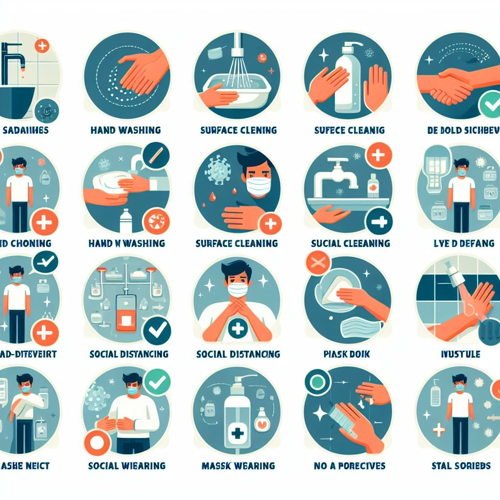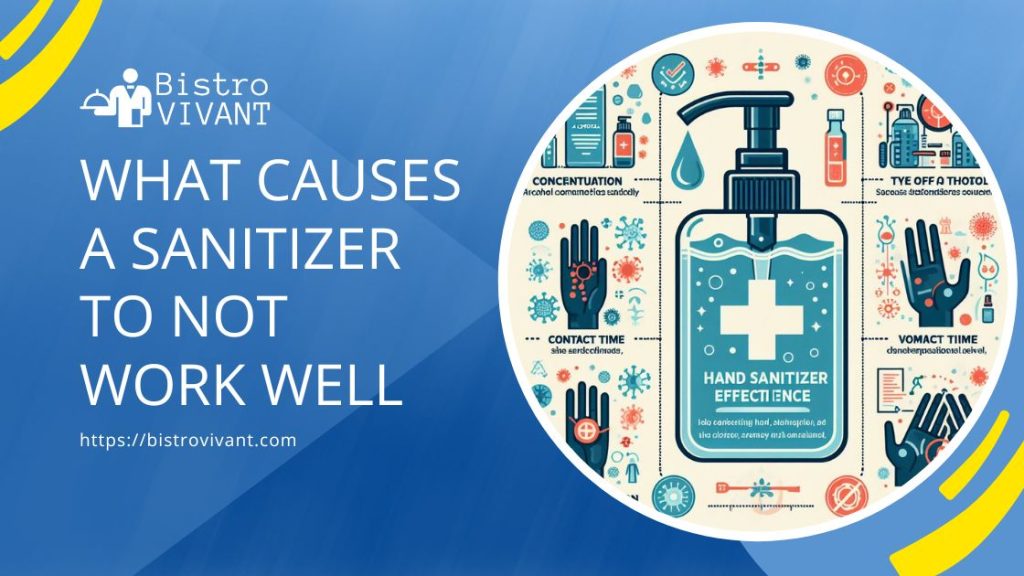Hand sanitizers are cleaning agents that are used to disinfect hands. Typically, they are alcohol-based solutions that can quickly reduce the number of microorganisms on hands. Despite their importance, there are certain conditions under which hand sanitizers may not perform effectively. Understanding what causes a sanitizer to not work well is essential to ensuring maximum protection against germs.
The use of hand sanitizers has become crucial to maintaining personal hygiene, especially in environments where access to water and soap is limited. They play a vital role in preventing the spread of infectious diseases.
Factors Affecting Sanitizer Effectiveness
In our pursuit of cleanliness and hygiene, hand sanitizers have become essential tools in our daily lives. However, not all sanitizers are created equal, and their effectiveness can vary based on several key factors. In this comprehensive guide, we will delve into the elements that influence the efficiency of hand sanitizers, shedding light on why some sanitizers may not work as well as others.

Type of Sanitizer
The type of sanitizer used plays a pivotal role in determining its effectiveness. Among the various options available, alcohol-based sanitizers stand out as the gold standard. These sanitizers, often containing ethanol or isopropyl alcohol, have been proven to be more effective in killing germs and bacteria compared to their non-alcohol-based counterparts.
Alcohol Content
One of the critical aspects of an effective sanitizer is its alcohol content. To ensure optimal germ-killing capabilities, a sanitizer should contain an appropriate amount of alcohol, typically falling within the range of 60% to 95%. This concentration is the sweet spot, striking a balance between potency and safety for the skin. Sanitizers with alcohol content below this range may not be as effective in eliminating harmful pathogens.
Contact Time
The concept of contact time is straightforward but often overlooked. It refers to the duration for which the sanitizer remains in contact with the skin. The efficacy of a sanitizer is closely tied to this factor. Inadequate contact time can significantly reduce its effectiveness.
To ensure optimal results, it’s essential to follow the recommended contact time, which is typically around 20 to 30 seconds. During this brief period, the sanitizer works its magic, annihilating harmful microorganisms.
Proper Application
Even the most potent sanitizer can fall short if not applied correctly. Proper application is vital to maximizing the sanitizer’s effectiveness. When applying sanitizer, make sure to cover all areas of the hands, including the fingertips, nails, and the often-neglected spaces between the fingers. Additionally, allow the sanitizer to dry naturally. Avoid wiping or rinsing your hands immediately after application, as this can diminish its germ-fighting power.
Environmental Factors
While we often focus on the product itself, environmental factors can also influence the effectiveness of hand sanitizers. Temperature and humidity levels in the environment can impact how sanitizers perform.
Extreme temperatures, whether hot or cold, can affect the stability and consistency of the sanitizer. Likewise, high humidity levels may alter the sanitizer’s composition over time. It’s essential to store sanitizers in a cool, dry place to maintain their integrity.
Understanding the Factors Behind Ineffective Sanitizer Use
In today’s hygiene-conscious world, hand sanitizers have become an essential tool for maintaining cleanliness and preventing the spread of germs. However, not all hand sanitizer usage is created equal, and there are common mistakes that can render a sanitizer less effective. Let’s delve into the reasons why a sanitizer may not work as expected and explore the importance of proper usage.

A. Insufficient Amount Used
One of the most prevalent mistakes when using hand sanitizer is applying too little of it. This oversight can have significant consequences, as it leads to inadequate coverage of your hands, resulting in reduced effectiveness. To ensure your sanitizer works optimally, it’s crucial to dispense a sufficient amount. The recommended amount is usually a palmful, and this quantity should be applied thoroughly to all hand surfaces.
B. Skipping Handwashing
While hand sanitizers are undoubtedly convenient, they should not completely replace the age-old practice of handwashing with soap and water, especially when hands are visibly dirty. Handwashing serves as the initial step in removing visible dirt, grease, and contaminants. Sanitizers are more effective when applied to clean hands. Therefore, it’s essential to strike a balance between the two methods to maintain proper hand hygiene.
C. Using Expired Sanitizer
Just like any other product, hand sanitizers have a shelf life, and using an expired sanitizer can be counterproductive. Over time, the alcohol content in sanitizers may degrade, diminishing their germ-killing effectiveness. Always check the expiration date on the sanitizer bottle before use. Using an expired sanitizer may provide a false sense of security and may not offer the protection you need.
D. Not Covering All Surfaces
Hand sanitizing should be a meticulous process, ensuring that every nook and cranny of your hands is covered. Neglecting certain areas can leave harmful microbes untouched, potentially compromising the effectiveness of the sanitizer. Pay special attention to fingertips, nails, and the spaces between fingers. Rub your hands together until the sanitizer dries to ensure thorough coverage.
E. Using Sanitizers with Inadequate Alcohol Content
The alcohol content of hand sanitizers is a critical factor in their effectiveness. Look for sanitizers that contain at least 60% alcohol, as this concentration is known to be effective in killing most germs. Sanitizers with lower alcohol content may not be as reliable in germ elimination. Always check the product label to confirm the alcohol concentration.
F. Rushing the Application
Proper hand sanitizer use involves taking the time to apply it correctly. Rushing through the process may result in uneven distribution or incomplete coverage. To maximize effectiveness, apply the sanitizer methodically, ensuring all hand surfaces are treated. This includes the fronts and backs of your hands, as well as your fingertips.
G. Using Sanitizer on Wet Hands
Hand sanitizers are most effective when applied to dry hands. Wet hands can dilute the sanitizer, reducing its potency. Therefore, it’s advisable to dry your hands thoroughly before using hand sanitizer. Additionally, refrain from rinsing your hands with water immediately after applying sanitizer, as this can wash away the active ingredients prematurely.
The Role of Microorganisms
To understand why sanitizers may fail to work well, it’s essential to grasp the significance of microorganisms in this context.

Types of Harmful Microorganisms
Microorganisms come in various forms, including bacteria, viruses, and fungi, and they can pose significant threats to human health. Let’s delve into the different types of these harmful microorganisms:
Bacteria
Bacteria are single-celled organisms that can thrive in diverse environments. While some bacteria are beneficial and essential for bodily functions, others are harmful and can cause diseases. Sanitizers target harmful bacteria to prevent infections.
Viruses
Viruses are microscopic infectious agents that rely on host cells to replicate. They can cause a wide range of diseases, from the common cold to severe illnesses like COVID-19. Effective sanitizers are designed to neutralize and destroy viruses, limiting their spread.
Fungi
Fungi are a group of organisms that include molds, yeasts, and mushrooms. Some fungi can lead to infections in humans, particularly in individuals with weakened immune systems. Sanitizers also aim to eradicate harmful fungi to maintain a safe environment.
How Sanitizers Kill Germs
Sanitizers work through a process that involves disrupting the outer cell membranes of microorganisms, ultimately leading to their destruction. Understanding this mechanism is crucial to comprehending why sanitizers may not always be entirely effective.

Sanitizers primarily use the following methods to kill germs:
Chemical Disinfection
Chemical disinfectants, such as alcohol-based sanitizers, contain active ingredients that break down the lipid (fat) layer of the microorganism’s cell membrane. This disruption causes the contents of the cell to leak out, rendering the microorganism non-viable.
Denaturation of Proteins
Some sanitizers work by denaturing or altering the proteins within the microorganism’s structure. This process disrupts the microorganism’s normal functions and leads to its death.
Oxidation
Certain sanitizers generate reactive oxygen species (ROS) that damage the microorganism’s DNA and other cellular components. This oxidative stress can be lethal to the microorganism.
Mechanical Action
In addition to chemical methods, the physical action of rubbing or scrubbing with sanitizer can mechanically remove microorganisms from surfaces. This action is especially effective in conjunction with chemical disinfection.
The Impact of Sanitizer Resistance
In the quest for a healthier and more hygienic environment, sanitizers have become a staple in our daily lives. From hand sanitizers to surface disinfectants, these products play a crucial role in preventing the spread of infections. However, it’s important to recognize that not all sanitizers are foolproof, and their effectiveness can be compromised.
In this comprehensive exploration, we delve into the reasons behind why a sanitizer may not work well, shedding light on the development of resistant strains of microorganisms and the long-term consequences this phenomenon poses to public health.

Development of Resistant Strains
One of the primary factors contributing to the ineffectiveness of sanitizers is the development of resistant strains of microorganisms. Microbes, whether bacteria or viruses, have an incredible ability to adapt and evolve over time.
When exposed to sanitizers repeatedly and frequently, a portion of these microorganisms may survive due to natural variations in their genetic makeup. These survivors carry traits that allow them to withstand the sanitizer’s active ingredients.
Overuse and Misuse
Overuse and misuse of sanitizers are key culprits in the development of resistant strains. While sanitizers are invaluable tools in reducing the risk of infection, excessive and indiscriminate use can inadvertently promote the survival of the fittest microorganisms. This is especially concerning in healthcare settings, where overreliance on sanitizers may lead to the emergence of healthcare-associated infections caused by resistant strains.
Long-Term Consequences
The emergence of resistant strains can have serious long-term consequences for public health and the effectiveness of sanitizers. As resistant microbes become more prevalent, the efficacy of conventional sanitizers diminishes.
This poses a significant challenge to controlling the spread of infectious diseases. Furthermore, the treatment of infections caused by resistant strains becomes more difficult, leading to increased healthcare costs and, in severe cases, higher mortality rates.
Reduced Protection
When sanitizers lose their effectiveness, individuals relying on them for protection may find themselves vulnerable to infections. This is particularly concerning in settings where people are in close proximity, such as schools, public transportation, and healthcare facilities. Sanitizers’ inadequate level of protection not only puts people at risk but also increases the prevalence of infectious diseases in the community.
Balancing Act
To address the issue of sanitizer resistance, it’s essential to strike a balance between effective hygiene practices and avoiding overuse. Education on proper sanitizer usage is crucial. Users should be aware of the recommended concentration, contact time, and frequency of use.
Additionally, alternatives to traditional sanitizers, such as mechanical cleaning methods and the development of novel antimicrobial agents, should be explored to reduce reliance on chemical sanitizers.
Best Practices for Effective Sanitization
In our pursuit of maintaining cleanliness and hygiene, sanitizers have become a ubiquitous part of our daily lives. It’s crucial to understand that not all sanitizers are equal and that a variety of factors can affect how effective they are. In this comprehensive guide, we will delve into the reasons behind why a sanitizer may not work well and explore best practices for ensuring their effectiveness

The Role of Sanitizers in Hand Hygiene
Hand sanitizers, when used correctly, play a pivotal role in preventing the spread of germs and diseases. They are convenient and effective tools, especially in situations where soap and water are not readily available. However, for sanitizers to fulfill their purpose, several critical factors must be considered.
Correct Handwashing Techniques
Proper handwashing techniques are the foundation of effective hand hygiene. Sanitizers should complement, not replace, handwashing. The misconception that sanitizers alone can provide complete cleanliness can lead to their reduced efficacy. Therefore, it is vital to emphasize the importance of thorough handwashing as the first line of defense against germs.
Choosing the Right Sanitizer
Not all sanitizers are created equal, and selecting the right one is paramount. The key considerations include:
- Alcohol Content: Sanitizers should contain a minimum of 60% alcohol to be effective against most germs. Insufficient alcohol content can render the sanitizer less potent.
- Type of Alcohol: Ethanol (ethyl alcohol) and isopropanol (isopropyl alcohol) are the most common types of alcohol used in sanitizers. Both are effective, but concentration matters. Ensure the sanitizer contains the appropriate type of alcohol in the right concentration.
Regular Sanitizer Evaluation
Sanitizer effectiveness can deteriorate over time. Factors such as exposure to air, light, and temperature fluctuations can impact their potency. It’s crucial to periodically assess the effectiveness of the sanitizer being used. Check for any changes in texture, odor, or color, as these can be indicators of degradation.
Importance of Public Awareness
Educating the public about the correct use of sanitizers is a cornerstone of maximizing their effectiveness. Many people are unaware of the proper application techniques and duration required for sanitizers to work effectively. Public awareness campaigns can bridge this knowledge gap and promote responsible sanitizer use.
Storage Conditions
The way sanitizers are stored can significantly affect their performance. Sanitizers should be kept in cool, dry, and shaded areas to prevent degradation. Exposure to direct sunlight or extreme heat can compromise their effectiveness.
Contaminated Hands
If hands are visibly dirty or greasy, sanitizers may not work well. In such cases, handwashing with soap and water is the recommended first step. Sanitizers are most effective on clean hands.
Incomplete Coverage
Sanitizer must be applied thoroughly to all parts of the hands, including between fingers and under nails. Incomplete coverage can leave areas unprotected and lead to reduced effectiveness.
Overuse or Misuse
Using too much sanitizer can be counterproductive. A small amount, typically a dime-sized portion, is sufficient for most individuals. Excessive use may cause skin irritation and still not enhance effectiveness.

Conclusion
Understanding the factors that can cause a sanitizer to not work well is crucial for maintaining effective hygiene practices. A variety of elements can impact the performance of sanitizers, including improper usage, such as not applying the right amount or not allowing sufficient contact time. Additionally, the type of microorganisms present can influence sanitizer effectiveness, as some may be more resistant to certain sanitizing agents.
Furthermore, the quality of the sanitizer itself is vital, with low-quality or expired products being less effective at killing germs. Environmental factors, like temperature and humidity, can also play a role, as extreme conditions may hinder sanitizer performance.
To ensure the optimal functioning of sanitizers, it is essential to follow manufacturer instructions, use high-quality products, and consider the specific application and environment in which the sanitizer will be used. This knowledge empowers individuals and institutions to maintain a clean and safe environment.
 https://bistrovivant.com is a participant in the Amazon Services LLC Associates Program, an affiliate advertising program designed to provide a means for website owners to earn advertising fees by advertising and linking to Amazon (.com,.co.uk,.ca, etc.) and any other website that may be affiliated with the Amazon Service LLC Associates Program. As an Amazon Associate, I earn from qualifying purchases.
https://bistrovivant.com is a participant in the Amazon Services LLC Associates Program, an affiliate advertising program designed to provide a means for website owners to earn advertising fees by advertising and linking to Amazon (.com,.co.uk,.ca, etc.) and any other website that may be affiliated with the Amazon Service LLC Associates Program. As an Amazon Associate, I earn from qualifying purchases.

